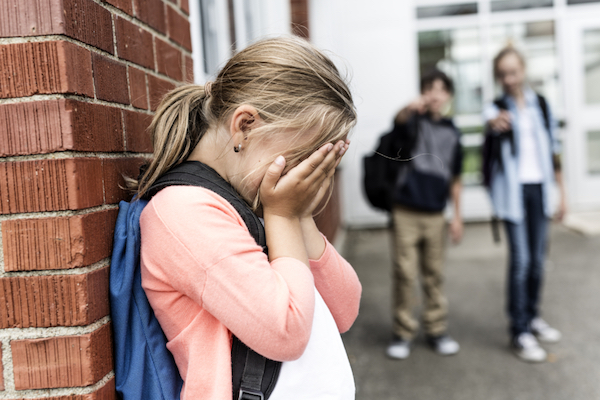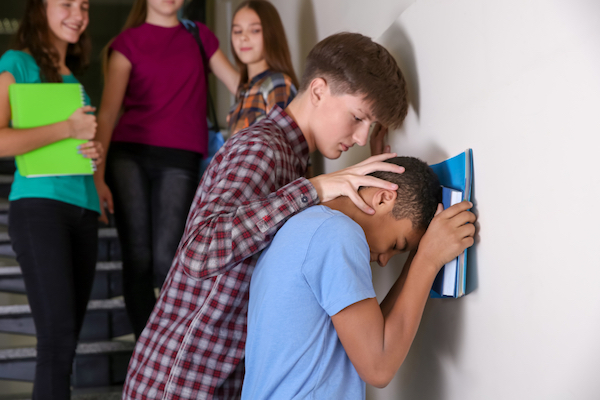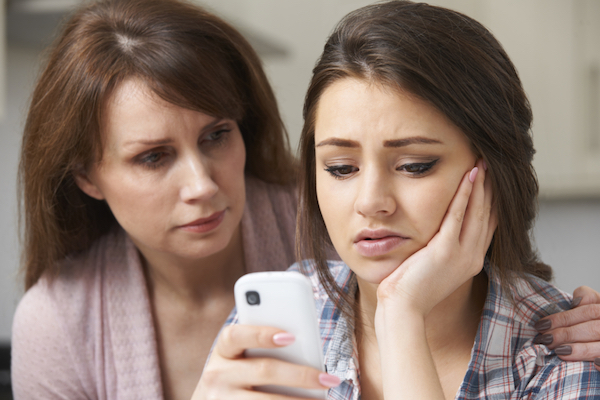What is Bullying?
Do you think you’re being bullied? To answer that question, it helps to know exactly what bullying is – and what it’s not. Basically, bullying is when a kid keeps picking on another because they think they’re stronger, better, cooler or smarter than them. Children bully others to try and make the other kid feel bad.
Sometimes it can be hard to know if what you are experiencing is truly bullying, so here are some clues to help:
- Bullying happens on purpose – it’s never an accident
- Bullying is aggressive and the victim doesn’t provoke it
- Bullying hurts the target in some way – physically or emotionally
- Bullying doesn’t happen just once – it’s usually repeated
- Bullying is about power (more for the bully, less for the victim)
There are lots of different kinds of bullying, too:
- Physically attacks (punching, kicking, slapping, shoving, etc.)
- Embarrassing someone in a hurtful way
- Repeatedly threatening to do something terrible to someone
- Spreading nasty rumours that are meant to hurt someone
- Constantly picking on a kid because of their appearance, race, clothing or something else
- Bullying can happen in person, online or both
- Sometimes it involves ‘ganging up’, with more than one bully
Bullying is serious and can be incredibly harmful to kids – but not all bad behaviour at school is bullying. For example, these situations are NOT bullying:
- A child (or group of children) who doesn’t want to play with you
- Someone getting mad and then yelling at you or calling you names
- Someone accidentally hurting you when you’re playing a game
- Someone getting back at you after you’ve done something to them
- Someone picking on you or wanting to fight (just a one-time thing)
If you believe you’re being bullied, tell a responsible adult – a teacher, a coach, a counsellor or your parents. There’s also the Kids Helpline – 1800 55 1800. The quicker you get help, the quicker something can be done. Even if you’re not the one being picked on, it’s important to report bullying – just imagine how you would feel if it was happening to you.
Types of bullying you should know about
Bullying is a lot more complex than you may think. As a teen, there are several types of bullying you might find yourself facing:
Physical bullying
This is the most obvious form of bullying and the easiest to identify – it’s when a bigger, stronger or more aggressive person physically attacks a target in some way. Like all forms of bullying, it can sometimes involve multiple aggressors (or targets).
Verbal attacks
Verbal bullies use words as weapons to gain control or power over their chosen target. They often single out those who seem ‘different’ in how they look, act or dress. This kind of bullying is more common than physical bullying but harder to pin down since it often occurs when nobody else is around. In many ways, verbal bullying can be even more dangerous than a physical attack because its effects can leave deep emotional scars and mess up the victim’s self-esteem.
Cyberbullying
This is bullying that happens online. It can involve anything from sending hurtful texts, photos or videos to spreading vicious rumours on social media or posting threatening messages. With tech on the rise, it’s a growing problem and especially serious because it’s harder to escape from than face-to-face bullying. Being a cyberbullying victim can feel overwhelming and never-ending. The Internet makes it easier for perpetrators to feel insulated or detached from their cruelty and in some cases, the victim may not even know exactly who is bullying them.
Sexual bullying
Sexual bullying comes in many forms: sexting, uninvited touching, sexual name-calling, propositioning, crude gestures, vulgar comments, exposing the victim to pornographic material, etc. Sexual bullying is harmful, repeated and humiliating to the target. In some cases, it can be a stepping stone to sexual assault.
Bullying based on prejudice
Some bullies target those they see as different because of their race, religion or sexual orientation. This repeated abuse can expand into other forms of bullying and can often be quite severe, leading to major emotional distress for the target.
Emotional bullying (relational aggression)
This kind of social manipulation is the ‘sneakiest’ kind of bullying. The bully spreads rumours, ostracises the target from a particular group, breaks confidences or manipulates situations to hurt the victim’s social standing and boost their own.
Don’t be afraid to ask for help. Talk to a trusted adult or call Kids Helpline – 1800 55 1800 – they’re free, 24/7 and talk to about 6000 young people a week about all sorts of issues.
What to do if your child is involved in a bullying incident
If you learn or suspect that your child has been involved in a bullying situation, your first step is to sit down and truly listen to them. Don’t jump to conclusions, don’t judge them, don’t start assigning blame and don’t let your emotions hamper your ability to gather all the facts. All parents have a strong protective instinct but the best starting point to help your child deal with bullying is calmness.
Ask them what they would like you to do to help (their wishes may be totally different from yours). Give them a say in the problem-solving process. Don’t dismiss their concerns as unimportant – it may have been difficult for them to build up the courage to talk to you about what happened and they’re looking to you for support.
If the bullying incident happened at school:
- Make an appointment with the school staff – don’t arrive unexpectedly.
- List the facts you know: the who, where, when, names of witnesses, whether this was a one-off or repeated behaviour, etc.
- Don’t accuse the school – this may be the first they’ve heard of the incident
- Work with the school (not against them) to try to find a solution
- Be patient – give school staff time to gather all the information they need to investigate what happened and why
- Self-educate about what bullying is (and isn’t)
Every school has an anti-bullying policy but their options for dealing with incidents may vary.
These can include warnings, speaking to the bully’s parents, internal exclusion (within school) and either permanent or fixed term exclusion from school.
It helps to keep a bullying diary, documenting each incident as soon as possible after it occurs and including all pertinent facts.
If your child has been injured, take photos. If the bullying was physical, you may need to involve a doctor or even the police. The school should be made aware of any short-term or long-term physical/emotional effects on your child from the incident(s).
Don’t be afraid to ask for help.
If you feel the need to talk to someone about your child’s bullying situation, you can contact Interrelate, Lifeline, Kids Helpline, Headspace or Relationships Australia.




